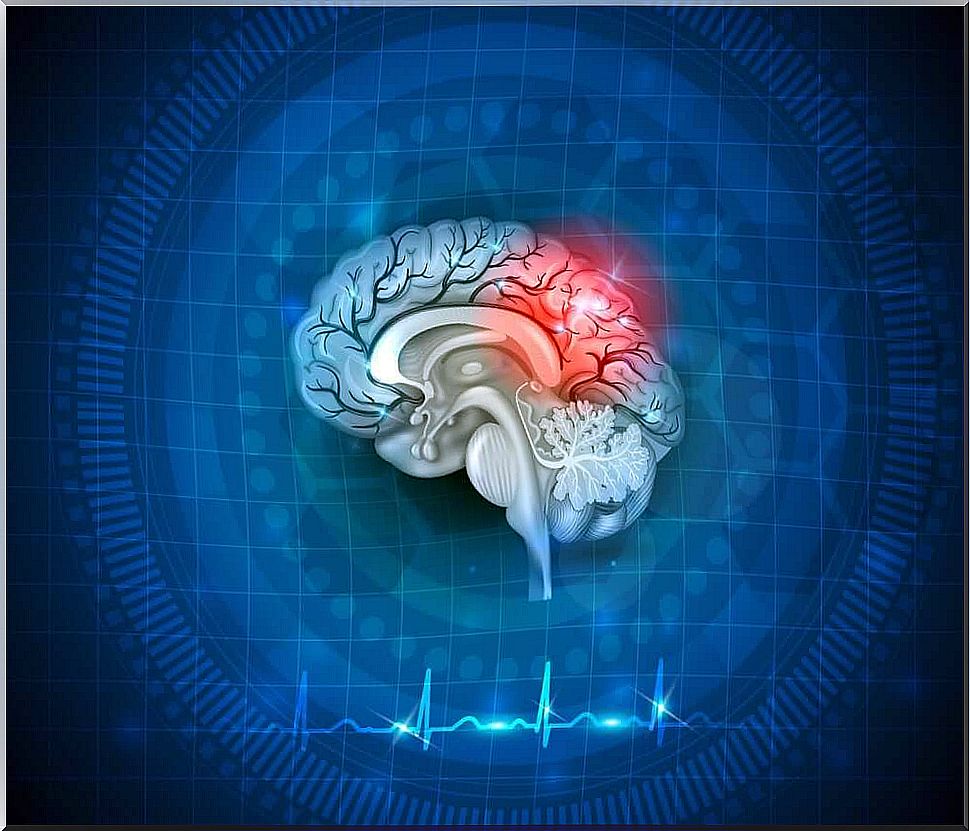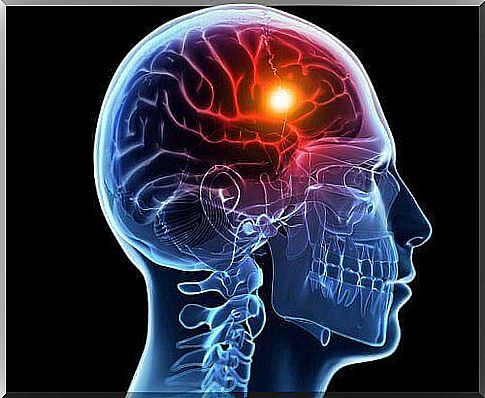Cerebral Hypoxia: Types And Causes
Cerebral hypoxia occurs when there is not enough oxygen to reach the brain. As it is a vital organ, the lack of oxygen is extremely dangerous. Here are the most common causes.

We speak of cerebral hypoxia when the oxygen supply to the brain is less than normal. A normal flow of oxygen is that which allows the brain to function properly, according to the body’s needs.
We must understand that the brain is an organ whose functions cannot be ceased. Sometimes some parts are activated and sometimes others. But the rest of the components of the human body depend on its proper functioning.
Thanks to its permanent work, the brain consumes a great deal of oxygen. This oxygen reaches it through the arteries which distribute the blood from the neck upwards. If the blood flow decreases, then there will also be less oxygen.
The brain is strongly affected by the lack of oxygen. Indeed, the cells which compose it begin their process of death, known under the name of cerebral infarction, beyond 5 minutes without oxygen. This shows how important an episode of cerebral hypoxia can be.
Causes of cerebral hypoxia
The causes of cerebral hypoxia are various. Sometimes the oxygen supply is reduced only in the region of the skull, and other times there is also a decrease in blood flow. With all that that implies.
Among the causes, we can cite:
- Altitude: Being at high altitudes above sea level decreases the oxygen available to the brain to function. It is called “altitude sickness”. We associate it with sports practices such as mountaineering or andinism
- Poisoning with gases: carbon monoxide is the main element of this cause. When there is poisoning by this gas, oxygen loses its place in the blood and is replaced by carbon monoxide. As a result, all cells in the body are given a gas that they cannot use for their metabolism.
- Neurological diseases of the medulla oblongata: certain pathologies, such as amyotrophic lateral sclerosis for example, attack the center of brain respiration, thus paralyzing the respiratory muscles. When respiratory mechanics fail, there is less oxygen coming in and a process similar to asphyxiation takes place.
- Asphyxia: Intentional asphyxia with criminal motives, such as that which can be related to accidents, are causes of cerebral hypoxia. Squeezing the neck, drowning in liquids, or inhaling fumes from a fire are various forms of asphyxiation.
Other causes …
- Arterial hypotension: when the blood pressure is too low, it becomes insufficient to supply all the tissues. Especially those who are furthest from the heart. Among the most affected tissues, we therefore find the brain
- Heart problems: Any disease of the heart that limits its ability to pump correctly and rhythmically can cause cerebral hypoxia. It can be an acute event, such as a myocardial infarction. Or a chronic situation such as arrhythmias
- Stroke. : they can be the cause of cerebral hypoxia in certain areas. Either because a cerebral artery becomes blocked with a clot, or because part of the vessels in the brain ruptures, causing hemorrhage.

Types of presentation
Depending on which region of the brain is affected by cerebral hypoxia, we can classify it differently. Some episodes of hypoxia damage cells only at a specific point in the brain. Whereas sometimes the general flow stops.
Thus, we can describe the following types of cerebral hypoxia:
- Focal: the cerebral hypoxia, in this case, is punctual. The classic example is a stroke that starts in a clot that obstructs a cerebral artery.
- Diffuse: this is the name given to the decrease in the flow of cerebral oxygen which occurs uniformly throughout the brain, without reaching gravity. The functions of the brain cells reduce, but infarction rarely occurs
- Global: here, the slowing down concerns the whole brain. The lack of oxygen is therefore so noticeable that the cells die. This results in different symptoms depending on the region of the brain affected.
- Massive: it is the maximum expression of cerebral hypoxia. Large areas of the brain are engorged at the same time, endangering life and later recovery

How to detect cerebral hypoxia?
Although the symptoms of cerebral hypoxia depend on the duration of the lack of oxygen, there are some distinguishing signs. Remember that a few seconds of hypoxia may not leave any damage. On the other hand, if it extends to 5 minutes, there will probably be a cerebral infarction.
In case of momentary cerebral hypoxia, there may be lack of attention, memory loss, rare sensations in the limbs of the body, difficulty in speaking, etc. Movement may also be limited, such as with paralysis.
The longer the lack of oxygen, the more cases of convulsions, fainting with unconsciousness and even coma appear. At this stage, the care becomes an emergency which requires immediate measures of maintenance of the vital functions on the part of health professionals.
Beyond 5 minutes of cerebral hypoxia, there is an infarction of the cells. A mild heart attack can lead to later recovery with rehabilitation. However, a massive heart attack is capable of causing the death of the entire brain.
Therefore, when faced with any neurological symptom, it is better to consult a specialist. On the other hand, if a person faints and does not respond immediately, or has a seizure, your best bet is to call an emergency room who can help quickly.









